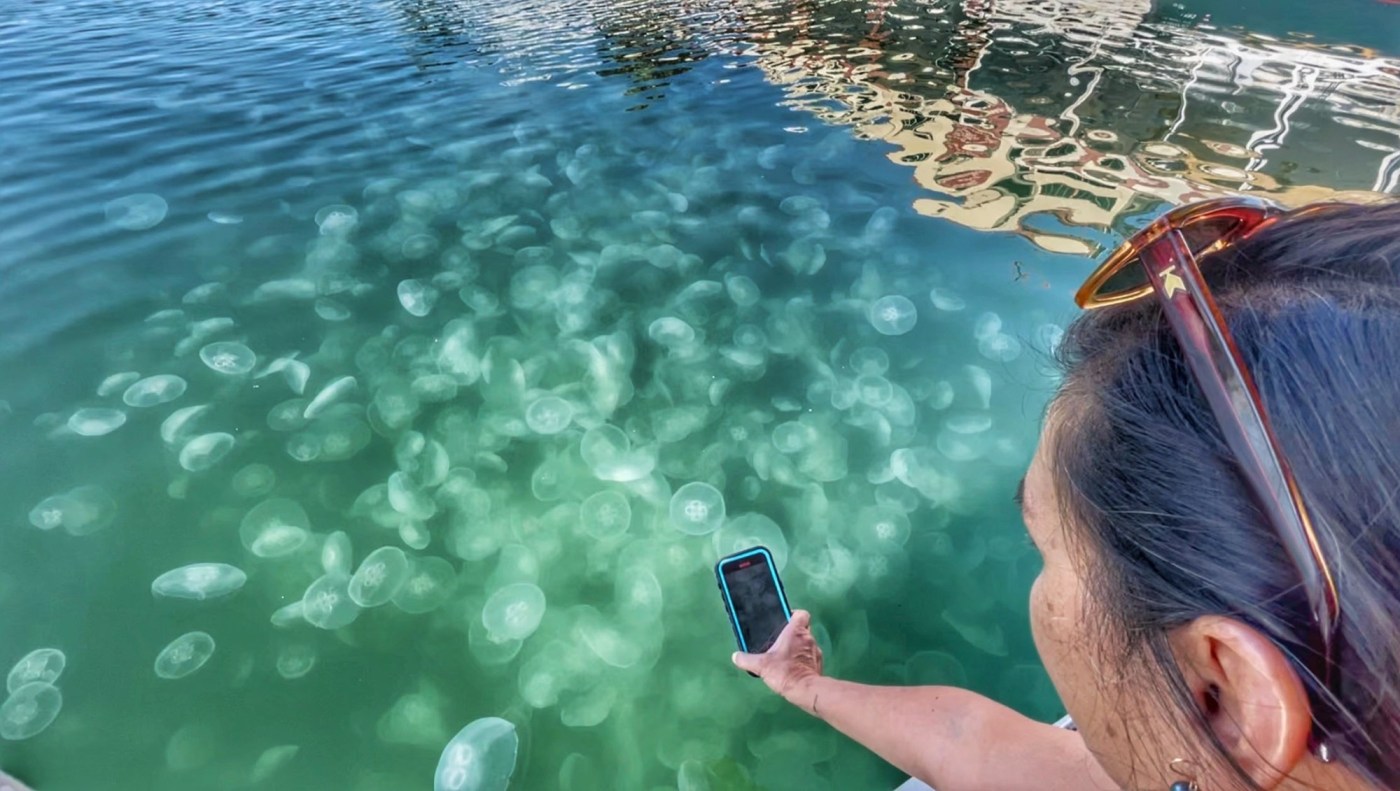At first, just a few of the floating jellies made their way to the surface in Newport Harbor, catching the eye of passengers on a passing Duffy boat as the translucent sea creatures pulsed with the rhythm of the ocean.
More of the moon jellies suddenly made their way to the sea’s surface, with hundreds of the gelatinous creatures suddenly blanketing the harbor water’s surface in an awe-inspiring sight.
The moon jelly bloom was spotted Wednesday, Aug. 20, in a tucked-away area of the Rhine Channel.

Jessica Brasher, director of husbandry at the Ocean Institute in Dana Point, said adult moon jellies often collect in harbors in large numbers due to their unique life cycle and their planktonic lifestyle.
As plankton, weak-swimming adult moon jellies are easily swept into bays and harbors by tides and currents, she said in an email.
Moon jellies also have a less-visible life stage as tiny polyps that attach to rocks, boats and piers beneath the surface. Under the right water conditions, these polyps begin to release juvenile jellies, called ephyrae, which develop into adults.
“The combination of active polyps and direction of currents can create the perfect conditions and setting for a jelly bloom,” Brasher noted.
Moon jellies, like all of their cnidarian cousins, do use their stinging nematocyst cells to catch their prey, Brasher said.
“Fortunately for those who encounter them, these stinging cells are built to capture microscopic plankton, and are typically not strong enough to penetrate human skin,” she assured. “On rare occasions, a mild irritation may occur for those with more sensitive skin.”
If irritation does occur, the venom’s effects can be further neutralized by immersing the area in hot water for 20 to 30 minutes, she said.
According to the Aquarium of the Pacific, the jellies feed primarily on zooplankton.
While they have no eyes, brain or heart, they can smell, taste, sense light and dark and also sense up and down, according to the aquarium.

The translucent moon jellies can be found around the world and are made up of about 95% water.
Want to know more about moon jellies?
The Aquarium of the Pacific has a Moon Jelly Touch Tank where people can find out what they feel like. A moon jelly is easily identified by the half-circle in the middle of its bell, which is reproductive tissue.
People can feed the jellies at the aquarium during specified hours.
